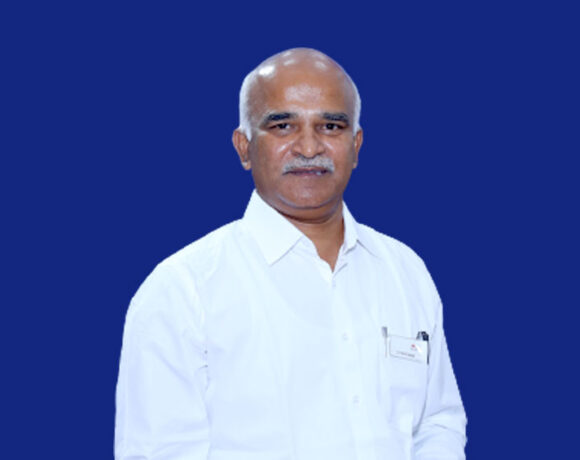‘Indian Technical Textile Industry Is Highly Competent And Resourceful’

The technical textile industry in India is experiencing a boom, with a compounded annual growth rate (CAGR) of 12% to 14%. The industry is in an exciting phase of development, with significant growth potential ahead, avers Avinash Misar in an exclusive interview with Henry Dsouza, Associate Editor of Textile Insights
Can you evaluate the current state of the technical textiles industry in India?
The technical textiles industry in India is currently in a very strong position and is experiencing one of its best periods. The sector is receiving the right amount of attention and has grown significantly to reach a size of approximately US$ 23 billion across its 12 verticals. However, exports remain relatively low at around US$ 3 billion, indicating a need for increased focus and development in this area. The entire industry is actively working to boost export figures.
Looking back to the 1990s, the growth of technical textiles in India began with the Packtech segment, which included products like woven bags and jumbo bags. The industry expanded through the development of HDPE (High-Density Polyethylene) and PP (Polypropylene) tapes, which provided innovative packaging solutions for industries like cement, replacing traditional materials such as jute.
In the late 1990s, the focus shifted towards geotech and agritech. From 2000 to 2010, there was substantial growth in agritech, driven by the need for diverse solutions in agriculture. Geotech also saw significant expansion due to its applications in infrastructure projects, such as roads, highways and dams. Initially, it was challenging to convince stakeholders to incorporate technical textiles, especially in government contracts where traditional specifications did not include them. However, the inclusion of technical textiles in World Bank projects marked a turning point, leading to their adoption in various government projects.
The industry’s growth in packtech, geotech and agritech has established a solid domestic market. More recently, there has been increased interest in other areas, such as protective wear, industrial applications and mobilitech, where technical textiles are used in automotive interiors and renewable energy sectors like wind and solar.
Currently, the technical textiles sector in India can be divided into two parts: one that has matured and continues to grow steadily, and another that is emerging, with high-tech applications like glass fabrics and aramids. These advanced materials are finding new uses and driving growth in several new segments.
Overall, the technical textile industry in India is experiencing a boom, with a compounded annual growth rate (CAGR) of 12% to 14%. The industry is in an exciting phase of development, with significant growth potential ahead.
Which segment of the technical textile market is currently driving growth in India? Is it geotextiles, or is there another segment contributing significantly to the industry’s expansion?
Geotextiles and agritech are certainly key drivers of growth in India’s technical textiles market. These segments have matured and continue to grow at a rate of 6% to 7%. However, there’s also a notable emerging segment: sporttech, which includes adventure sports, athleisure and other sports-related textiles.
Sporttech has gained momentum over the past two years and, while it currently operates at a smaller scale compared to more established segments, its growth rate is much higher. This rapid expansion is due to the increasing demand for specialized sports and athleisure products. Five years ago, the industry did not see sporttech as a significant market. However, perceptions are changing, with many major players in the garment industry now recognizing the potential of this segment. There is a substantial opportunity for those who enter this market early, especially for B2B suppliers who cater to global brands.
Additionally, there is significant growth potential in segments like glass fibres and fabrics. The market demand for glass fiber in India, including ECR and high modulus glass is 345,000 MT. The demand and supply gap is less than 225,000 MT and is growing at a CAGR of 5.0-5.5%. This gap has led to substantial imports, but with the introduction of the Production Linked Incentive (PLI) scheme, there is considerable investment to increase domestic capacity to about 3 kilo tonnes. This expansion represents another growth area within India’s technical textiles sector.
How have government initiatives like the National Technical Textiles Mission (NTTM) and the Production Linked Incentive (PLI) scheme impacted the technical textiles industry in India?
Government initiatives such as the National Technical Textiles Mission (NTTM) and the Production Linked Incentive (PLI) scheme have significantly impacted the technical textiles industry in India.
The NTTM has been instrumental in advancing the technical textiles sector. Before 2014, the industry was relatively underdeveloped, with minimal focus and growth. The NTTM provided a structured framework to support the sector, leading to R&D and innovation, market development, geographical spread and policy support.
The PLI scheme initially targeted large companies in capital-intensive upstream segments like fibres and fabrics, requiring a 1:2 investment-to-turnover ratio. This was challenging for general textiles, where a 1:3 or 1:4 ratio is more typical. Despite the high threshold, the initial PLI scheme saw a reasonable response. The upcoming second PLI scheme aims to support midstream and downstream industries with lower turnover thresholds (Rs 25-50 crore). This is yet to be announced but, if implemented, it could offer more inclusive support and attract smaller players, making the PLI more comprehensive and effective.
Unlike the TUFS (Technology Upgradation Fund Scheme), which provided direct subsidies for machinery and infrastructure, the PLI is business-related, addressing high financing costs in India (around 18%). This makes incentives and subsidies crucial to making investments more viable, especially compared to countries like China, which benefit from lower financing costs. Overall, while the PLI has faced challenges, it remains a key initiative for encouraging investment and competitiveness in the sector.
What further policy measures are necessary to sustain and increase growth in the technical textiles sector in India?
To sustain and enhance growth in the technical textiles sector, it’s crucial to focus on optimizing existing policies and ensuring their effective implementation rather than introducing new ones. Streamlining access to current policies, including subsidies and incentives, is essential. Simplifying guidelines and processes will help businesses, especially smaller players, fully benefit from these schemes.
Many states have introduced specific technical textiles policies, which is a positive development. However, it is important to ensure these policies do not lead to unhealthy competition or undermine each other. Coordination among states can prevent a “race to the bottom,” where states try to outdo each other, potentially harming the overall industry.
While subsidies help reduce initial investment burdens, they do not address ongoing operational costs. Therefore, emphasis should be placed on improving operational efficiency, lean manufacturing practices and inventory management. Support for advanced technologies and practices that enhance productivity and reduce costs in the long run is also crucial.
Continued investment in research and development (R&D) is necessary for innovation and maintaining competitiveness. Policies should support not only the adoption of new technologies but also the development of homegrown innovations. Additionally, incentives should be structured to support businesses at various stages of growth. While initial investments are crucial, ongoing support that addresses operational challenges can make a significant difference.
Implementing robust monitoring and feedback systems is also vital to assess the effectiveness of policies and make necessary adjustments. This will ensure that policies remain relevant and responsive to industry needs. By optimizing these areas, the technical textiles sector can build on its current momentum and achieve sustainable growth.
How do you see global market trends influencing the Indian technical textile industry? Are there any specific global trends affecting the industry?
Global market trends are significantly influencing the Indian technical textile industry. Currently, technical textiles account for approximately 65% of the global textile market. As economies develop and markets expand, the share of technical textiles is expected to grow even further. While both technical and general textiles are experiencing growth, technical textiles are advancing at a faster rate—around 12-14% annually compared to 4% for general textiles. In the next decade, technical textiles could make up 60% of the global market, with general textiles falling to 40%, though the overall market will continue to expand.
In India, the technical textiles sector currently represents about 10-12% of the market, but this is projected to increase significantly. The government’s ambitious target of $300 billion by 2030 is achievable, particularly with the anticipated growth in the man-made fibres (MMF) sector. Cotton’s capacity to drive this growth is limited, but MMF has the potential to scale up significantly.
One critical aspect is that India’s focus has historically been on developing its upstream capabilities—such as fibres, yarns and fabrics—but this approach has not always translated into competitive advantages in garment manufacturing. For instance, Bangladesh, despite lacking a robust upstream industry, has become a major player in garment exports by specializing in garment manufacturing and leveraging imports from countries like China. This focus on specialization has allowed Bangladesh to outpace India in garment production, highlighting the need for a more balanced approach.
India’s challenge lies in improving operational efficiency and supply chain management. For example, Bangladesh’s garment sector operates at much higher efficiency levels compared to India, which impacts the cost and competitiveness of Indian garments. Addressing these inefficiencies and optimizing supply chains could help India enhance its position in the global market.
What major challenges is the Indian technical textile industry currently facing? Are there any specific obstacles that need to be overcome?
The primary challenge facing the Indian technical textile industry is that it is primarily a midstream and downstream industry. Our industry is largely composed of converters that provide solutions to customers by assembling various components. In essence, we buy materials, assemble them into a final product and deliver it to the customer. This is similar to assembling a meal from various ingredients—each item is sourced separately, and we do not produce the base ingredients ourselves.
Given that our industry operates mainly at the downstream and midstream levels, it is crucial that the supply chain from the upstream, such as the availability of raw materials, flows smoothly without any disruptions. Unfortunately, this is not currently the case. There are several barriers affecting this flow, including Quality Control Orders (QCO), import regulations and policies aimed at reducing dependence on China. While these measures are in the national interest, they complicate access to essential raw materials needed by the technical textile sector.
This lack of easy access to necessary materials often prevents us from capitalizing on business opportunities that we are otherwise capable of converting. The technical textile sector often gets overshadowed within the broader context of the textile industry, and this lack of focus can lead to further challenges. As a sub-set of the larger industry, technical textiles sometimes struggle to find specific solutions and recognition.
Despite these challenges, the technical textile industry in India possesses a high level of competence. We have some of the best engineers and technologies available. Technical textiles require a multidisciplinary approach, involving experts from textile chemistry, chemical technology, mechanical engineering and even civil engineering, especially in areas like geotextiles. India’s robust educational system, with its numerous IITs, engineering colleges and management schools, ensures we have no shortage of skilled professionals.
In short, while the Indian technical textile industry is highly competent and resourceful, the main challenge lies in ensuring a seamless supply chain for raw materials and gaining more focused attention within the broader textile sector. Addressing these issues could significantly enhance the industry’s growth and competitiveness.
How is the technical textile industry addressing sustainability and the demand for eco-friendly products?
Sustainability is absolutely essential in today’s business environment. It’s not just a choice but a fundamental requirement for progress. Embracing sustainable practices is the only way forward, and any industry that does not align with sustainable principles will inevitably face significant challenges.
The technical textile industry, in particular, is well-positioned to lead in sustainability efforts. For example, many technical textile plants in India already operate with a strong focus on sustainability. It’s common to find these facilities using environmentally friendly practices, such as employing Effluent Treatment Plants (ETPs) and opting for greener energy sources like natural gas instead of coal. Approximately 70% of these plants prioritize such sustainable practices, which highlights the industry’s commitment from the outset.
When it comes to managing waste, the technical textile industry offers several opportunities for recycling. A prime example is the recycling of PET bottles into polyester fibre which, while not a traditional textile product, serves as an excellent example of waste material being repurposed within the broader technical textile industry. This focus on minimizing waste and finding innovative recycling solutions is a core principle of the industry.
Additionally, the technical textile industry is committed to ensuring that any waste not suitable for recycling is disposed off in the most sustainable way possible, often using advanced treatment methods like Effluent Treatment Plants (ETPs). This commitment to sustainability and circularity is not just a practice but a foundational philosophy of the industry.
You’ll find this sustainable approach prevalent across various segments of the technical textile industry, from agritech to packaging. The industry’s inherent focus on sustainability and circularity ensures that it remains at the forefront of eco-friendly practices.
What opportunities do you see for the Indian technical textile industry in the global market over the next decade?
The opportunities are tremendous, particularly given the rapid pace of global change. If I reflect on my own experiences over the past 40 years, the transformation we’ve witnessed is remarkable. But the changes we will see in the next 15 years will be even more significant, likely tripling in impact and effectiveness.
This rapid evolution presents a huge opportunity for the technical textile industry. For example, innovations like conductive fabrics are set to revolutionize our everyday lives. Imagine a simple shirt becoming a smart garment embedded with conductive fibres that connect with various technologies, from medical monitoring devices to GPS tracking. In just a few years, conductive fabrics could become commonplace, linking us to numerous applications through advanced artificial intelligence and digital integration.
Technical textiles aren’t just about wearable technology; they span multiple sectors. Consider geotextiles: today, these fabrics are not typically equipped to detect geological changes. However, envision a future where geotextiles are smart and electronically enabled, capable of real-time data transmission about the structural integrity of a dam or road, all linked directly to satellites. This could eliminate the need for centralized monitoring agencies, fundamentally changing how we gather and analyze data.
The integration of AI with smart fabrics, smart textiles and e-textiles will go far beyond simple functionalities like monitoring blood pressure. In the future, all our garments could potentially connect us to a vast network, facilitating a more interconnected and intelligent world.
Another exciting innovation is the development of flexible solar fabrics. Instead of traditional, rigid solar panels, we could soon have solar fabrics that are easy to deploy, like the tarps used during monsoon seasons. This flexibility offers a practical and versatile solution for solar energy capture, greatly expanding its potential applications.
While these innovations might seem expensive initially, costs will decrease as production scales up. Just as we’ve seen with mobile phones, once costing 18 rupees per call, now costing less than a rupee due to volume, the same will happen with these new technologies. Although initial adoption may be slow, technological absorption occurs much faster today than in the past. I anticipate that within the next five to seven years, these advancements will become widespread and accessible.
How has the export performance of Indian technical textiles been in recent years?
The export performance of Indian technical textiles in recent years has been modest. Currently, exports account for about US$ 3 billion of the overall $23 billion technical textile market in India, which is roughly 10% of the total business. This export level is relatively low; ideally, a healthy export rate for the industry should be around 30-40%, or even 50% in some cases. At ITTA and at various policy levels, the consensus is that achieving at least a 60-40 split between domestic and export markets is crucial for growth.
There are specific segments within technical textiles with high export growth potential, such as protective textiles, Meditex (medical textiles), and technical fabrics. As these segments mature, they can produce fabrics and products that meet international market requirements. This is crucial because simply producing large quantities of a material like polyester does not guarantee international relevance or demand. The industry’s growth and maturity will enable it to align more closely with the specific needs of global markets.
A key factor in improving export performance is focusing on research and development (R&D) and product development. Technical textiles are highly specialized, and there is no standard solution or product. Each product is often customized to meet the needs of a particular customer or market. For instance, geotextiles are not commodities that can be mass-produced in standard specifications; they require continuous technological and developmental growth.
To enhance export growth, the industry needs a more dynamic approach, which I call the “GULP market” strategy: Go, Understand, Learn, and Produce. This approach involves going to international markets, understanding their requirements, learning how to meet those needs, and then producing the appropriate products. It is essential to move away from a conventional, commodity-based approach to a more specialized and innovative one.
Support from initiatives like the National Technical Textiles Mission (NTTM) and other policy measures has been beneficial, providing a foundation for growth. However, there is always room for improvement, and the industry must continue to adapt and innovate to achieve its full potential in exports.
How serious are technical textile companies about investing in R&D? Do they prioritize R&D as a significant part of their operations? Do they create something on their own, or is there a specific need driving this?
Product R&D is a crucial component of the technical textiles industry. However, there are two distinct types of R&D: product development and fundamental scientific research. Product development focuses on creating new products and improving existing ones. For example, a few years ago, the development of conductive fabrics required basic scientific research, such as experimenting with graphene coatings to achieve conductivity. This level of R&D requires a deep understanding of the underlying science, which is not typically conducted by the companies themselves. Instead, companies often collaborate with institutions or research bodies to support this foundational research.
The technical textiles industry is largely focused on midstream and downstream activities rather than upstream. Companies are more likely to be engaged in processing and product development rather than in the scientific research necessary for creating new materials like aramids or carbon fibres. This type of research is typically undertaken by specialized textile research institutes, such as BITRA, which has made significant progress in carbon research, or CITRA, which focuses on MedTech. These core research bodies are responsible for the scientific advancements that form the foundation of new product development in the industry.
In terms of product R&D, which directly impacts business growth, companies in the technical textiles sector are highly proactive. They often start with laboratory-scale production and pilot testing before scaling up to full production. For instance, many technical textile companies have their own pilot labs and equipment to test new products. In our factory, we have a pilot coating machine that mimics the full-scale coating process but on a smaller scale. This allows us to conduct initial testing, make necessary adjustments and ensure the product meets all requirements. Once all internal and third-party testing is completed and validated, we move to full-scale production on the main machines.
Product development is essential for maintaining competitiveness in the technical textiles industry. Continuous innovation and new product development ensure that companies can secure new business opportunities. If a company can develop a unique product, it often has a market advantage for a couple of years until others catch up. This cycle of innovation, competition and commoditization drives the industry’s dynamics, requiring constant attention to R&D to stay ahead.
What initiatives or support does ITTA offer its members? What is ITTA’s vision for the technical textile industry by 2030, and what are its future plans?
The beauty of the Indian Technical Textile Association (ITTA) lies in its role as the voice of the technical textile industry. ITTA was established to unify everyone in the technical textiles sector, creating a common platform to address ecosystem and policy issues. Our core mission is to be the collective voice of the industry.
Another key aspect of ITTA is its function as a repository of knowledge and expertise. With in-depth, hands-on knowledge about technology, ITTA is the go-to resource for anything related to technical textiles. We are a technical repository, largely because we have members from over 400 companies in the industry, ranging from large corporations like Arvind, Welspun and Reliance, to smaller downstream businesses. These companies bring a wealth of experience, innovation and expertise to the table, contributing to ITTA’s robust knowledge base.
ITTA conducts a variety of programmes, including conclaves, seminars and training sessions focused on different verticals within technical textiles. These activities strengthen ITTA’s position as a key player in the industry by fostering knowledge sharing and collaboration.
Additionally, ITTA maintains WhatsApp groups for each of the technical textile segments, ensuring a steady flow of technical information and fostering community among members. For example, if a member needs a specific type of nylon fabric, they can quickly request information within the group and receive prompt assistance from other members.
ITTA’s vision is to foster growth and innovation within the technical textiles sector, with a specific focus on increasing market size and enhancing technological capabilities. By 2030, the goal is to grow the industry from its current value of US$ 23 billion to between US$ 40-45 billion. This growth trajectory is seen as both ambitious and achievable, considering the current momentum and the supportive policies in place.
Looking further ahead, ITTA envisions the technical textiles industry reaching a value of US$ 200 billion by 2047. The focus will remain on enhancing product development, technological innovation and expanding into new markets.














